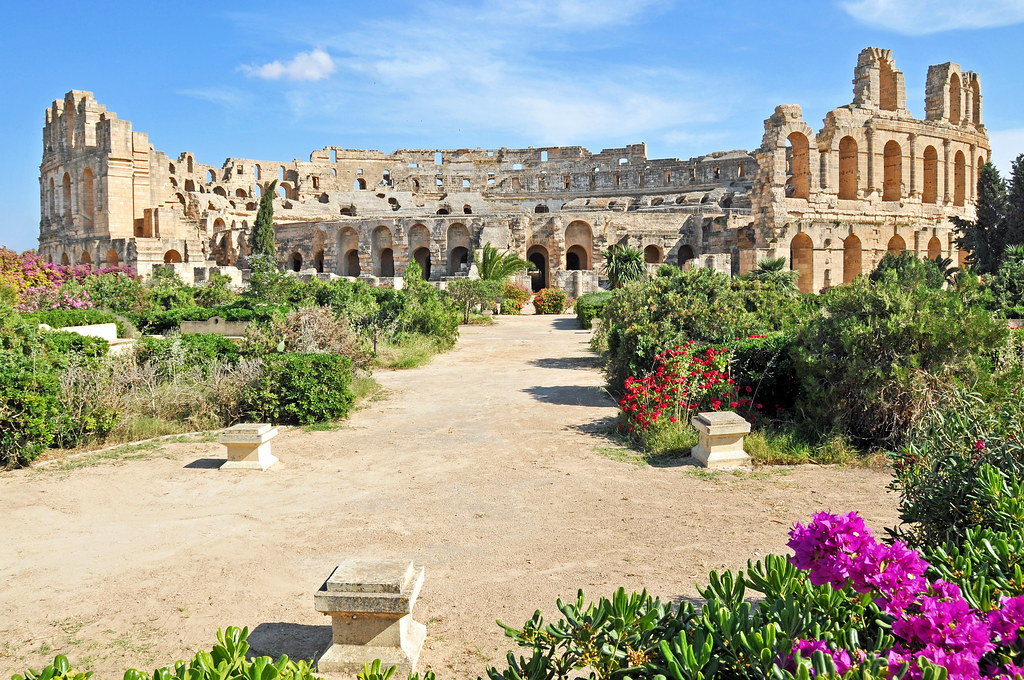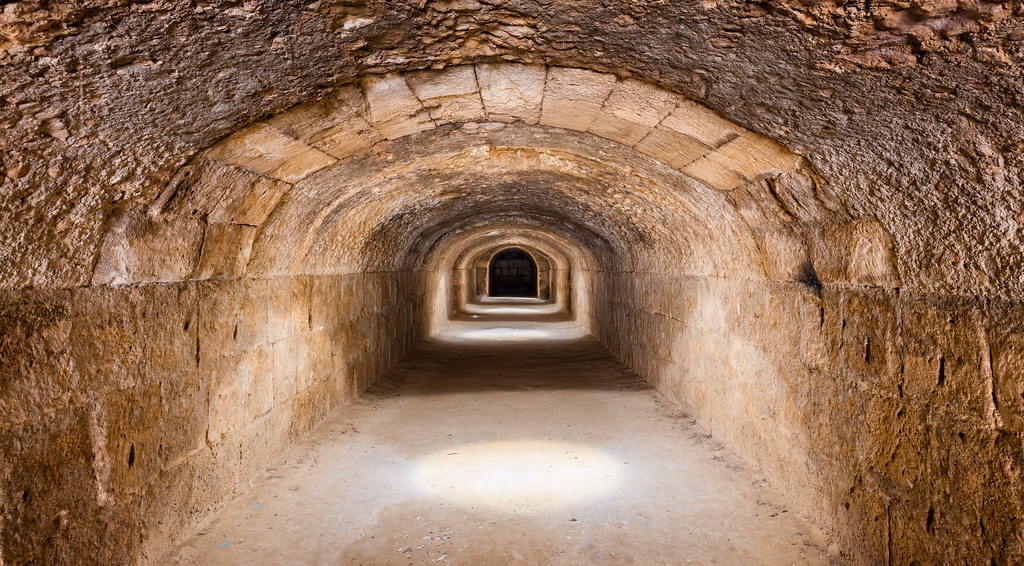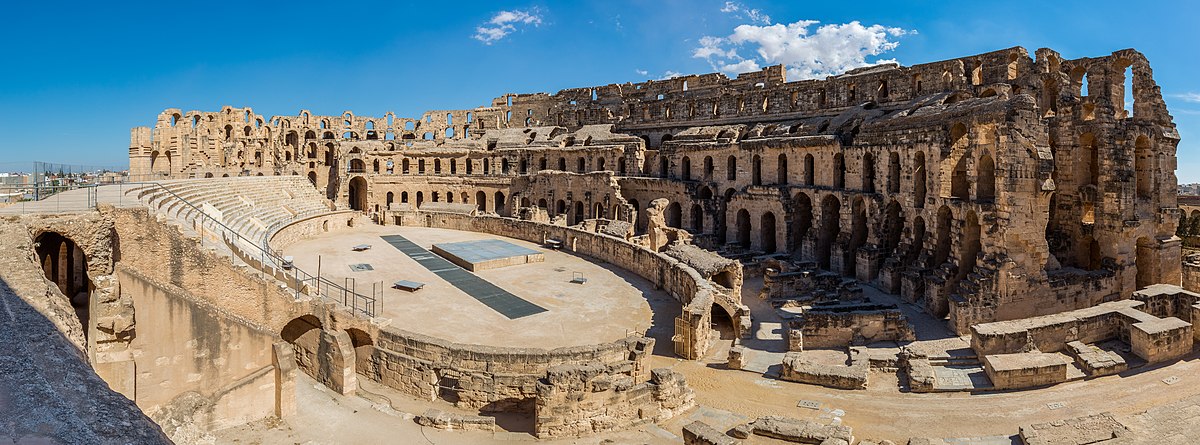A Colossal Echo of Rome in Africa
The Amphitheatre of El Jem, a majestic testament to the Roman Empire’s architectural and engineering prowess, stands as a solitary titan in the Tunisian landscape. This colossal structure, a UNESCO World Heritage site, is the third largest amphitheater in the world and the best-preserved outside of Italy. Its imposing scale, combined with its exceptional state of preservation, continues to awe and inspire visitors from across the globe.


A Masterpiece of Roman Engineering
Constructed around 238 AD during the reign of Gordian II, the El Jem amphitheater is a marvel of Roman engineering. Its elliptical arena, surrounded by towering tiers of seats, is a breathtaking spectacle that evokes a sense of awe and wonder. Built entirely of stone blocks without the use of mortar, the amphitheater stands as a testament to the skill and knowledge of its Roman builders.
The amphitheater is divided into three distinct levels, each with its own unique character and purpose. The lower level, or hypogeum, once housed the subterranean chambers where animals, gladiators, and stage props were prepared for the spectacles. Today, visitors can explore this intricate network of tunnels, imagining the hustle and bustle of preparations before a performance.
The middle level, or arcades, offered seating for the upper classes, while the top level, or summa cavea, accommodated the general public. The intricate details of the arches, columns, and decorative elements showcase the Romans’ mastery of architectural design. As one ascends the tiers, the vastness of the amphitheater becomes increasingly apparent, offering a breathtaking panorama of the surrounding countryside.

A Glimpse into Roman Life and Spectacle
The Amphitheatre of El Jem was more than just a venue for entertainment; it was a vibrant hub of social and cultural life in Roman Tunisia. The games and spectacles held within its walls were a reflection of Roman society, its values, and its fascination with power, glory, and spectacle.
Imagine the roar of the crowd as gladiators battled to the death, chariots raced around the arena, or exotic animals were pitted against each other. The amphitheater was a place of excitement, drama, and spectacle, where the lives of ordinary people intersected with the world of the elite. The underlying tension, the anticipation, and the raw emotion of these events must have been palpable.
Beyond the arena, the city of El Jem offers further insights into Roman life. The archaeological museum houses a collection of artifacts discovered at the site, providing a tangible connection to the past. From everyday objects to ornate treasures, these artifacts offer a glimpse into the daily lives, customs, and beliefs of the Romans who once inhabited this region.

A Timeless Monument
Today, the Amphitheatre of El Jem stands as a solitary titan in the Tunisian landscape, a silent yet powerful testament to the enduring legacy of the Roman Empire. Its colossal scale, architectural brilliance, and rich historical context continue to captivate and inspire visitors from around the world.
As you explore the amphitheater, you can’t help but be transported back in time, imagining the vibrant life that once filled this extraordinary space. The echoes of the past seem to linger in the air, inviting visitors to experience the grandeur and spectacle of ancient Rome.
Getting to El Jem
El Jem is easily accessible from major cities in Tunisia. Tunis, the capital, is located some 200 km north of El Jem, and Sousse, the third-largest city in Tunisia and a popular holiday destination, is 70 km north. You can take a direct train from either Tunis or Sousse, which will take you to the center of El Jem, not far from the amphitheater. There are also louages (minivans serving as public transportation) available from nearby cities.





